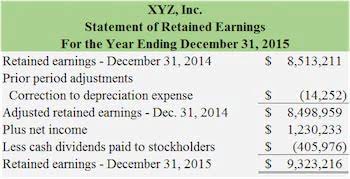Instructions for Form 1065 2024 Internal Revenue Service

Because the partnership can’t determine a partner’s level of bookkeeping and payroll services participation, the partnership must identify net income from property described earlier under Rental Activities (without regard to the partner’s level of participation) as income that may be subject to recharacterization. Net passive income from a rental activity is nonpassive income if less than 30% of the unadjusted basis of the property used or held for use by customers in the activity is subject to depreciation under section 167. Other Net Rental Income (Loss) , later, for reporting other net rental income (loss) other than rental real estate. Appropriate basis adjustments are to be made to the adjusted basis of the distributee partner’s interest in the partnership and the partnership’s basis in the contributed property to reflect the gain recognized by the partner.

Current year net income (loss).

If the expenditures were for intangible drilling costs or development costs for oil and gas properties, identify the month(s) in which the expenditures were paid or incurred. If there’s more than one type of expenditure or more than one property, provide the amounts (and the months paid or incurred if required) for each type of expenditure separately for each property. If the partnership made a qualified conservation contribution for the preservation of a historic structure, there are additional requirements that may apply to obtain a charitable contribution deduction. This deduction may be reduced if rehabilitation credits were claimed for the historic structure. This deduction may be denied if the partnership doesn’t comply with section 170(f)(19).
What Is the Taxpayer Advocate Service?

The activity of holding mineral property doesn’t qualify for this exception. Identify on an attached statement to Schedule K-1 the amount of any losses that aren’t subject to the at-risk rules. Deduct payments or credits to a partner for retained earnings services or for the use of capital if the payments or credits are determined without regard to partnership income and are allocable to a trade or business activity.
- When a partnership’s federal return is amended or changed for any reason, it may affect the partnership’s state tax return.
- For tax years beginning after November 12, 2020, enter the partner’s amount of deductible BIE for inclusion in the separate loss class for computing any basis limitation (defined in section 704(d) and Regulations section 1.163(j)-6(h)).
- This includes general partnerships, limited partnerships, and limited liability companies (LLCs) classified as partnerships for tax purposes.
- In addition, if a domestic section 721(c) partnership is formed after January 17, 2017, and the gain deferral method is applied, then a U.S. transferor must treat the section 721(c) partnership as a foreign partnership and file a Form 8865, Return of U.S.
- Whether or whether the earnings were divided, partners must still pay income tax on them.
Waste Management and Remediation Services
- See these forms and their instructions to determine the amount to enter.
- The codes used when reporting amounts from line 19b in box 19 of Schedule K-1 are provided in the headings for the following categories.
- The determination of whether rental real estate constitutes a trade or business for purposes of the QBI deduction is made by the partnership.
- Percentage depletion is limited to 50% of the taxable income from the property as figured under section 613(a), using only income and deductions for the AMT.
- Rental real estate that doesn’t meet any of the three conditions noted above doesn’t constitute a trade or business for purposes of the QBI deduction and must not be included in the QBI information provided to partners.
- These contributions must be reported separately on an attached statement because partners must separately determine the limitations on the deduction.
Unused investment credit from the advanced manufacturing investment credit allocated from cooperatives (code R). Unused investment credit from the qualifying advanced energy project credit allocated from cooperatives (code Q). Unused investment credit from the qualifying advanced coal project credit or qualifying gasification project credit allocated from cooperatives (code P). However, whether a partner qualifies as a limited partner for purposes of self-employment tax depends on whether the partner is considered a limited partner under section 1402(a)(13).

It further segregates the income and loss among general partners and limited partners. If the partnership’s total assets on Schedule K exceed $10 million, then a Schedule M-3 will need to be filed rather than a Schedule M-1. If you are a partner in a what is a 1065 partnership, you should expect to receive a Schedule K-1 from the partnership so you can include your portion of the partnership’s profits or losses on your own tax return.
The partnership enters $1,700 as the ending balance of the partner’s share of recourse liabilities in item K1 of the Schedule K-1 for tax Year 1. For tax Year 1, the partnership would enter $1,500 in box 20 under code X as the aggregate ending balance of the partner’s or related person’s payment obligations. Section 704(c) property is property that had an FMV that was either greater or less than the contributing partner’s adjusted basis at the time the property was contributed to the partnership. See Dispositions of Contributed Property , earlier, for more information. If the partnership made such a distribution during its tax year, attach a statement to the contributing partner’s Schedule K-1 that provides the following information. This represents gain or loss on the sale, exchange, or other disposition of property for which a section 179 deduction has been passed through to partners.
Av. Hermes da Fonseca, 1542
Bairro: Tirol
Cidade: Natal/RN – Brasil
CEP: 59020-000
[email protected]
+55 (84) 4006.0700